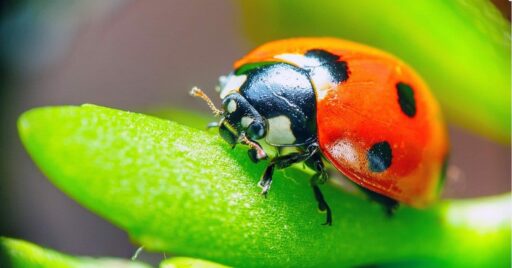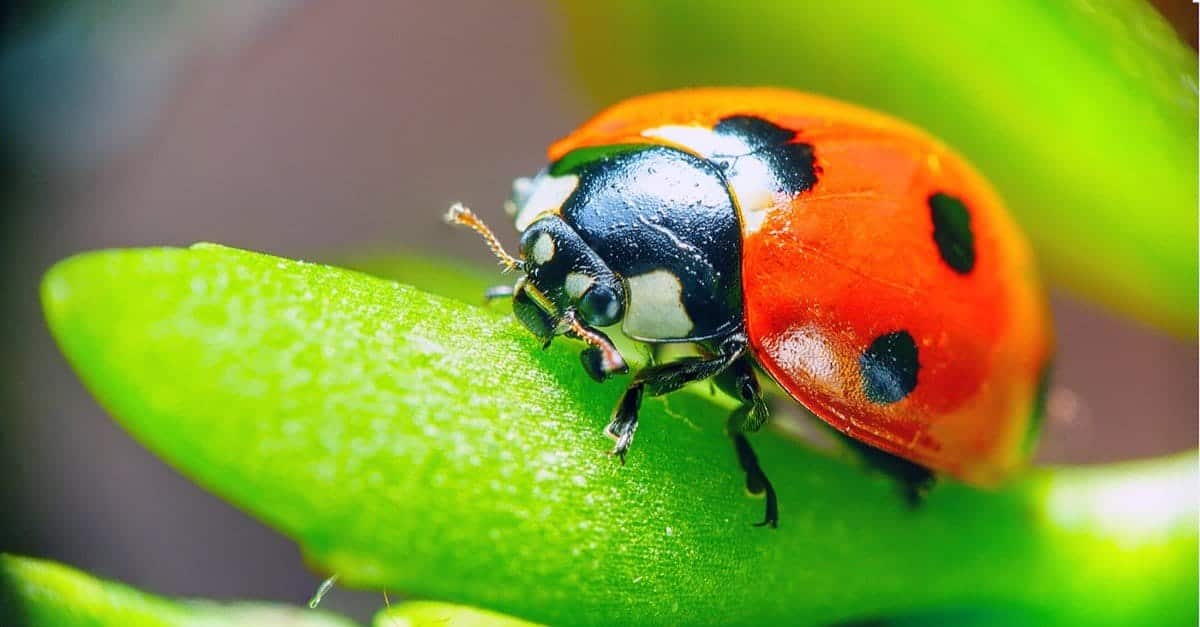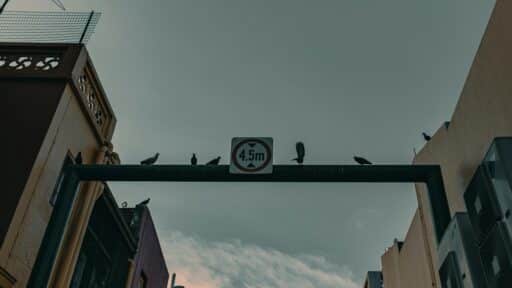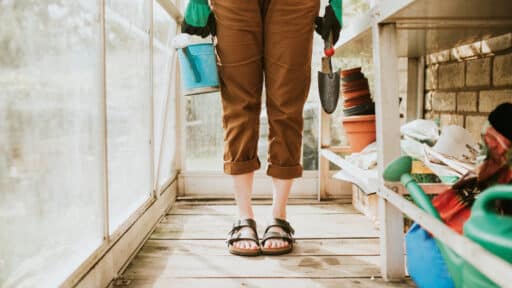Ladybugs are small, colorful insects commonly found in gardens worldwide. Despite their size, they play an important role in maintaining garden health. You might think, What do ladybugs eat and drink in gardens? Ladybugs are always searching for food in your garden. They act as tiny garden detectives and keep an eye on troublemakers such as aphids and mites while also improving the health of your garden. So, they’re like natural pest controllers in your garden.
When it comes to what they eat, ladybugs have a particular preference for soft-bodied insects. They don’t need much water, and they often get all the hydration they need from the dewdrops found on leaves and petals.
So, let’s learn more about what ladybugs eat and drink in your garden.
What is a Ladybug?
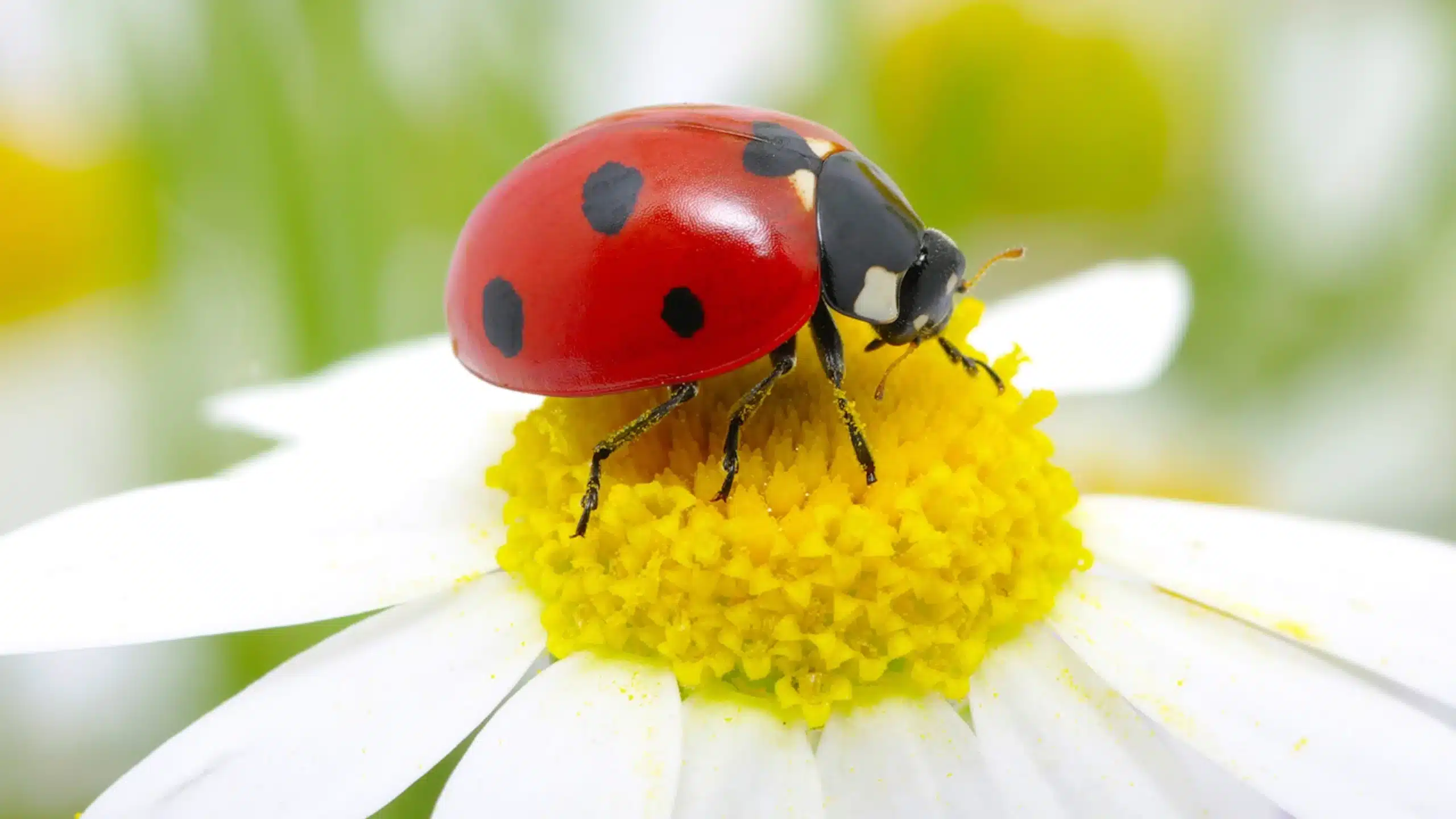
Ladybugs, also called ladybirds in some places, are interesting and helpful insects in gardens. They’re small, colorful beetles that people often associate with good luck. You can find them in gardens all over the world. Ladybugs are usually tiny, ranging from 1/32 to 3/8 inches in size. They come in different colors, such as red, orange, yellow, and even black. What makes ladybugs stand out are their special spots. These spots can be different in number and pattern depending on the type of ladybug. It’s just a feature of its species. And we will going to find out what ladybugs eat and drink in gardens.
List of What Ladybugs Eat and Drink
1. Aphids
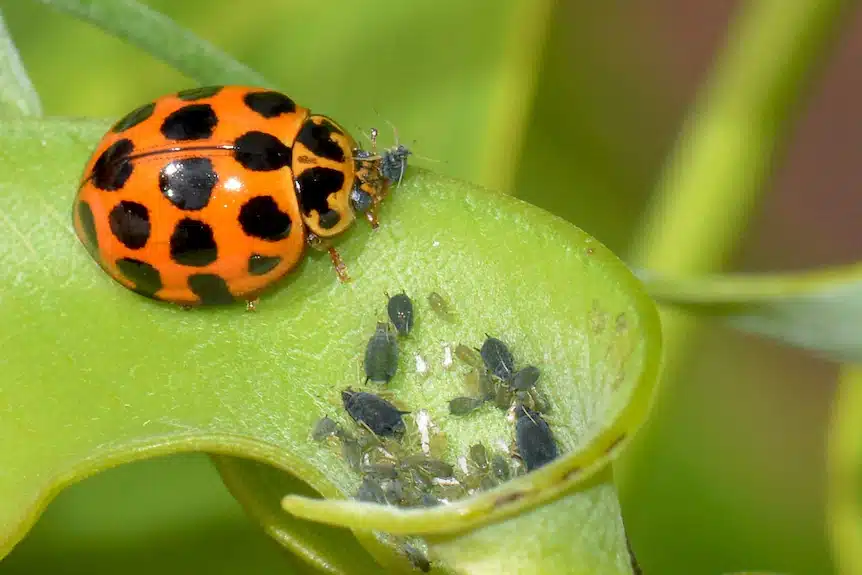
Aphids are tiny insects that suck sap from plants and can be a bother in your garden. Ladybugs, on the other hand, love to eat these little critters and are often seen on plant leaves and stems. Aphids can harm plants by drinking their juices, which makes leaves curl and weakens the plants. Thankfully, ladybugs are nature’s way of controlling aphids. They can smell the sugary liquid that aphids release when they feed, which is such as a dinner bell for ladybugs. When ladybugs smell aphids, they come and eat them, helping to keep your garden free of aphids.
2. Butterfly Eggs
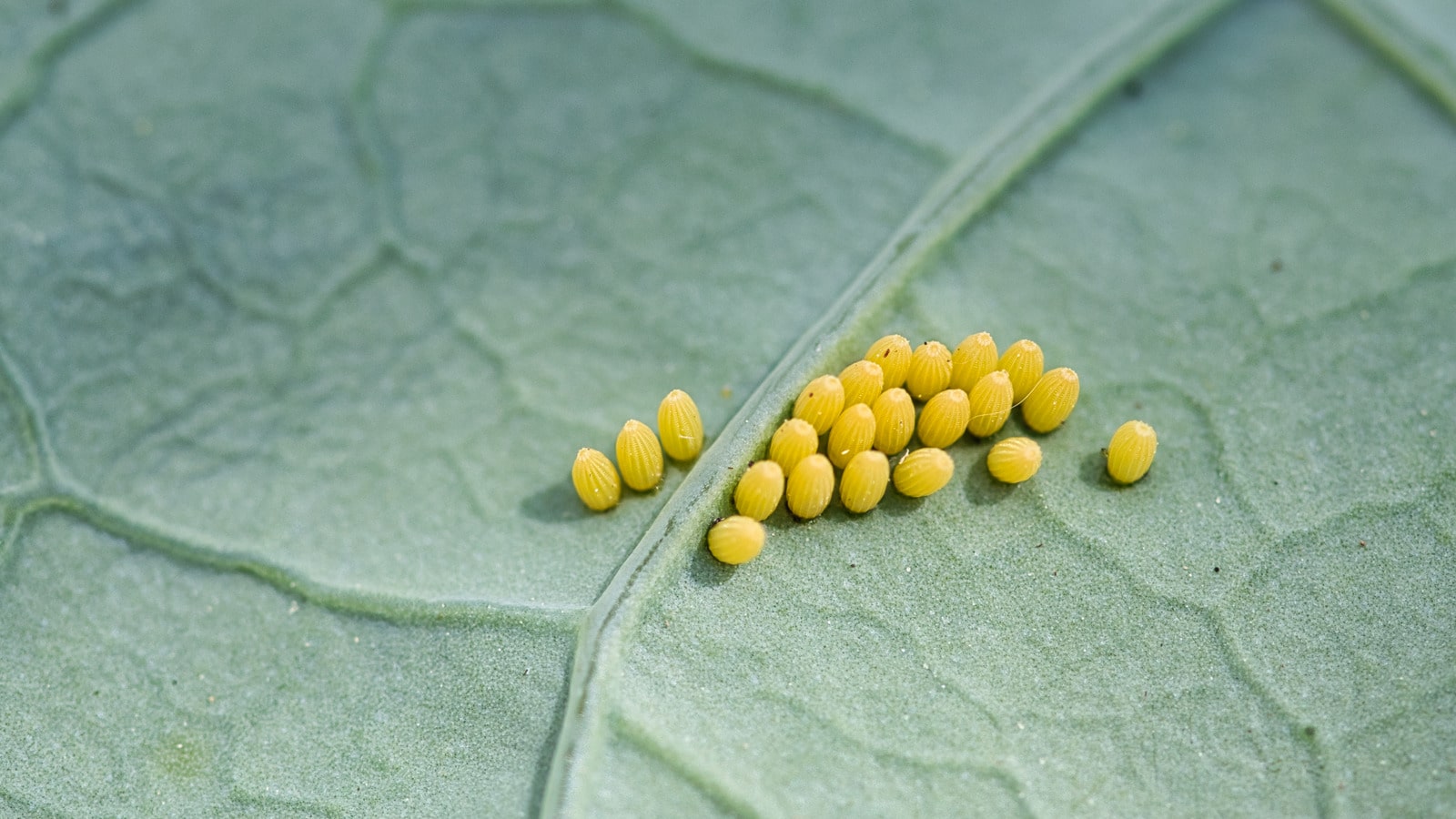
Ladybugs, despite their cute appearance, are quite fierce when it comes to finding food. They have a special liking for butterfly eggs, which might sound surprising. Let me explain why: Female butterflies lay their eggs on plant leaves, and these eggs later hatch into small caterpillars. These caterpillars can be pretty destructive, munching on leaves and stems, which isn’t great for plants. Ladybugs, with their keen eyes, often spot these egg clusters and tiny caterpillars. This not only helps safeguard your garden from potential butterfly damage but also gives ladybugs a nutritious meal.
3. Oak Leaf Phylloxera
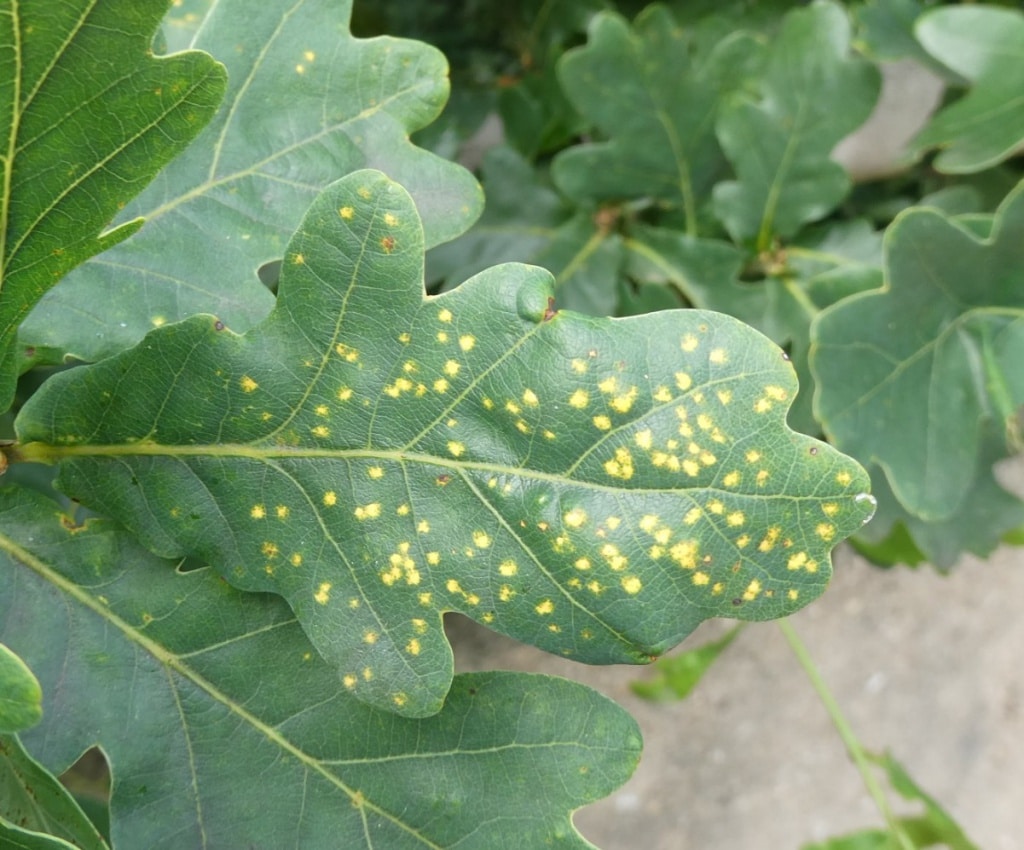
Oak leaf phylloxera is a type of tiny bug that can harm oak trees and bushes. These insects poke holes in oak leaves and drink their sap. This can cause odd growths called galls on the leaves, which aren’t best for the tree. Ladybugs are known to eat these bugs, which helps keep their numbers in check. When ladybugs find these insects on oak leaves, they eat them up because they taste good. This natural way of controlling the bug population keeps your oak trees healthy and looking nice, all thanks to these helpful garden guests.
4. Mites
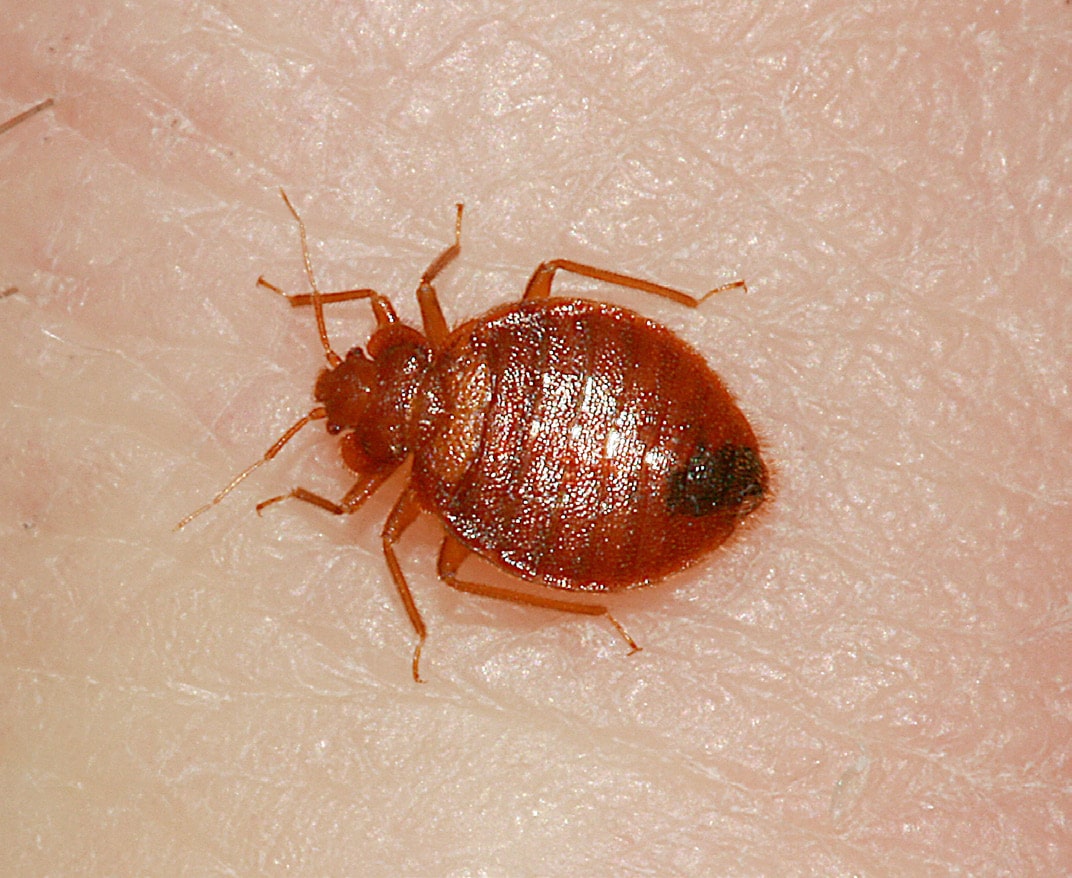
Mites are tiny arachnids that can harm your garden plants. They harm plants by poking holes in their cells and taking out their insides, leading to discolored, speckled leaves and weaker plants. Luckily, ladybugs are excellent at fighting mites. We all know that Ladybugs are great at hunting, and they can find and eat mites, even in leaf cracks. They eat different kinds of mites, like spider mites and broad mites, which often bother gardens. By eating these troublesome bugs, ladybugs help keep mite numbers low and protect your garden plants.
5. Pollen
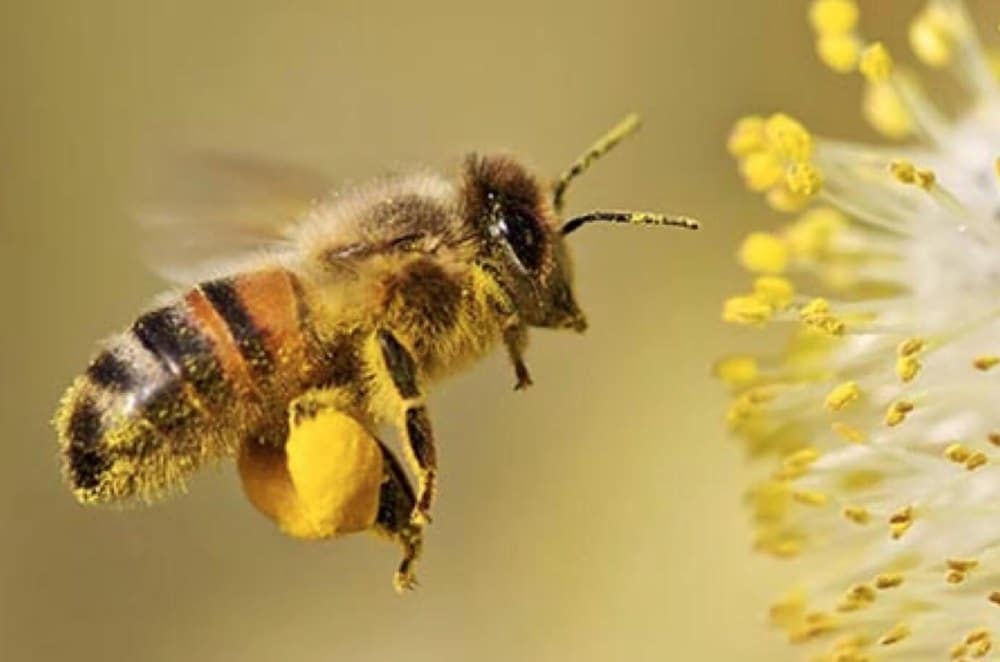
Pollen plays a vital role in helping plants make new plants. It’s the dusty stuff made by the boy parts of flowers, called stamens. Ladybugs mainly eat bugs, but sometimes they munch on pollen, too. This might sound strange, but when there aren’t many bugs around to eat, ladybugs can snack on pollen for food. They might eat it by mistake while hunting bugs or on purpose when there’s not much else to eat. Even though pollen isn’t their main meal, it gives ladybugs important nutrients, especially when they need fast energy. Also, ladybug toys can help children learn more about these fascinating creatures.
6. Leafhoppers
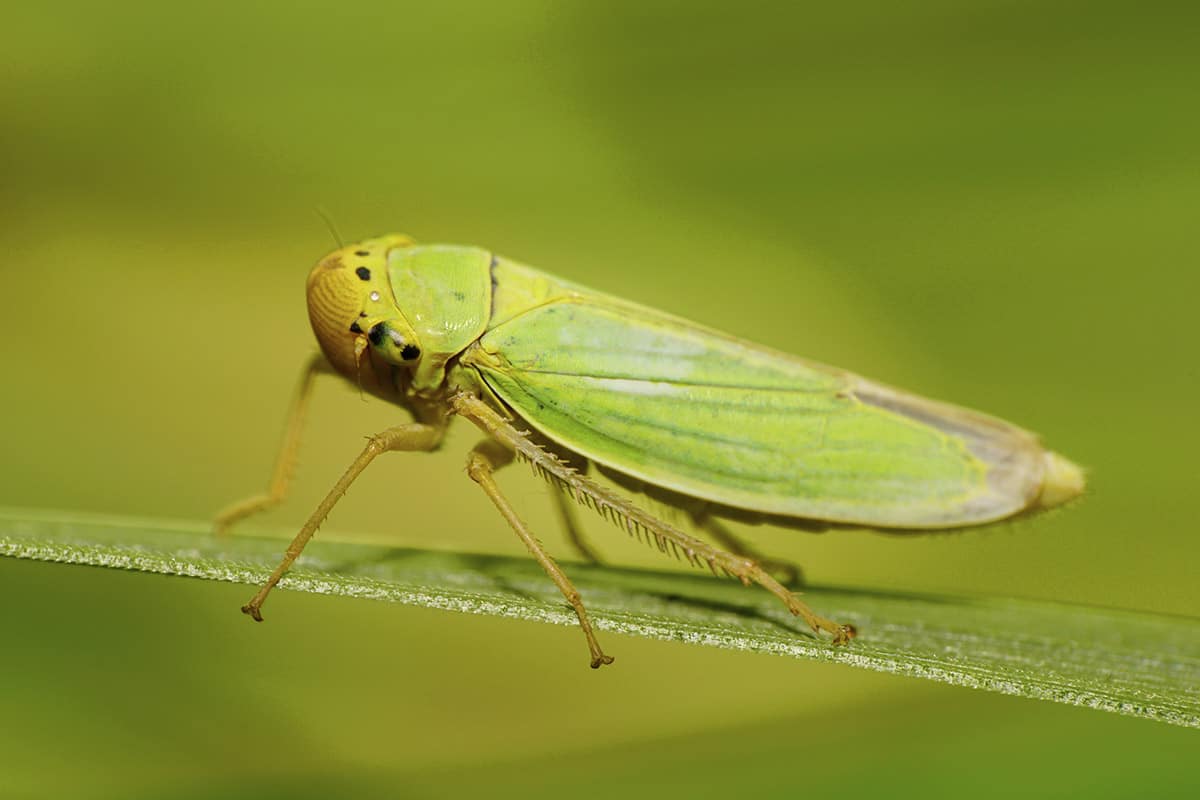
Leafhoppers are tiny, wedge-shaped bugs that are famous for their hopping skills. They suck plant juice using needle-like mouths and can sometimes spread diseases to plants, making them troublesome for gardens. Ladybugs are leafhopper’s natural enemies and are essential for controlling their numbers. With their quick reflexes and big appetites, ladybugs catch and eat leafhoppers, which helps safeguard your garden plants from harm and illness. A helpful tool for observing these ladybugs is the Habitat Kit, which provides a mesh enclosure for observing them.
7. Thrips
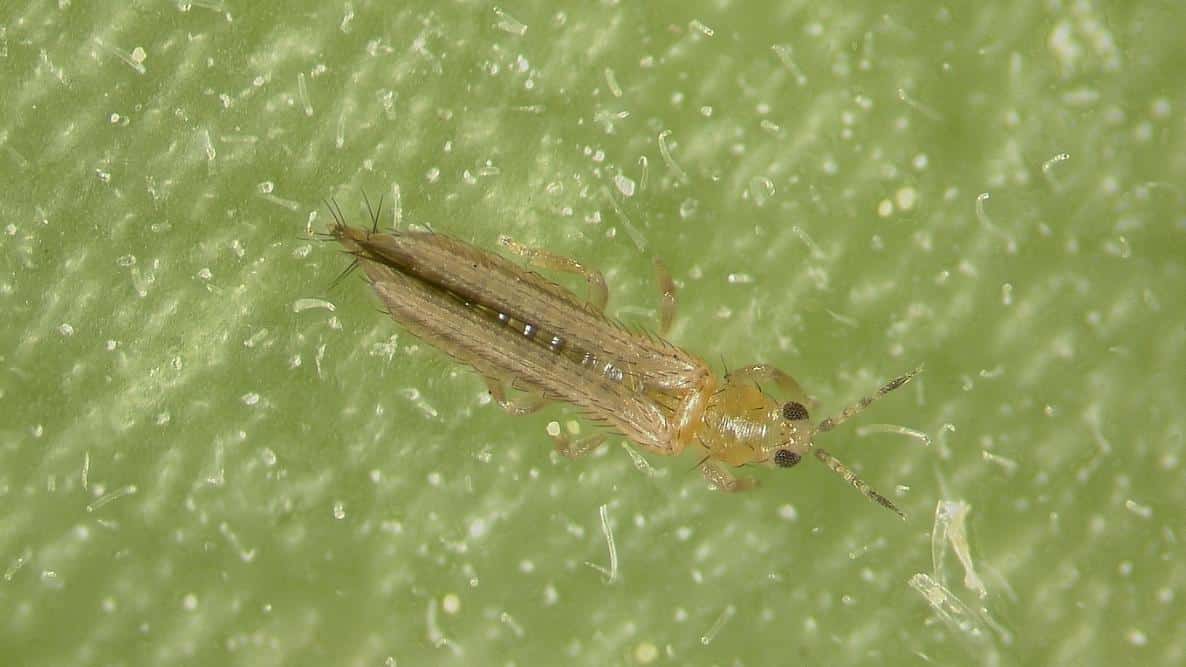
Thrips are very small, slim bugs that can harm your garden. They eat by scratching plant surfaces and sucking out the cell juices, which makes leaves look silvery or bronze. Ladybugs are good at catching thrips. They smell them out and eat them when they find them on plants. This helps keep thrip numbers down and stops them from making your garden plants look bad.
8. Flower Nectar
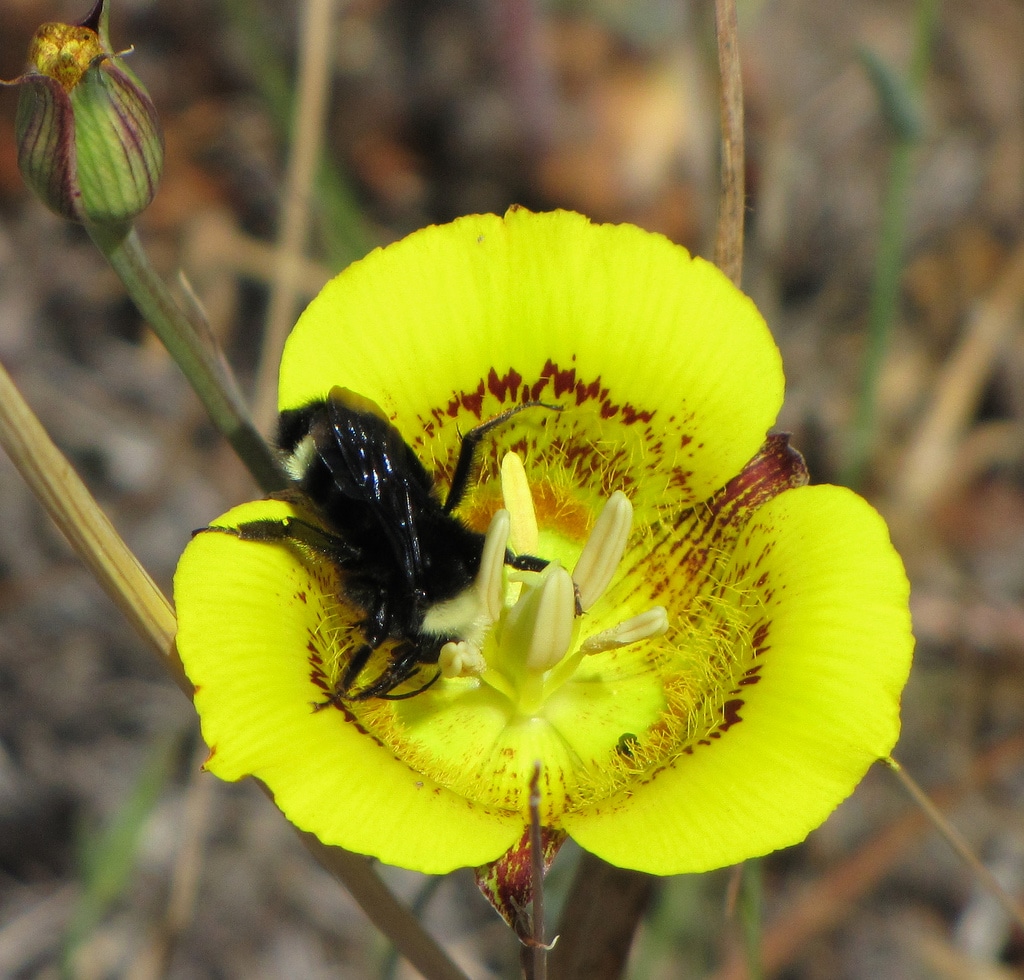
While ladybugs are primarily carnivorous and feed on insects, they also have a sweet tooth for flower nectar. Nectar is the sugary liquid produced by flowers to attract pollinators, such as bees and butterflies. Ladybugs may visit flowers not only for their insect prey but also to sip nectar. They have specialized mouthparts that allow them to feed on this sugary substance. While nectar isn’t their primary food source, it can provide ladybugs with energy and hydration, especially when they need to refuel between hunting sessions.
9. Mealybugs
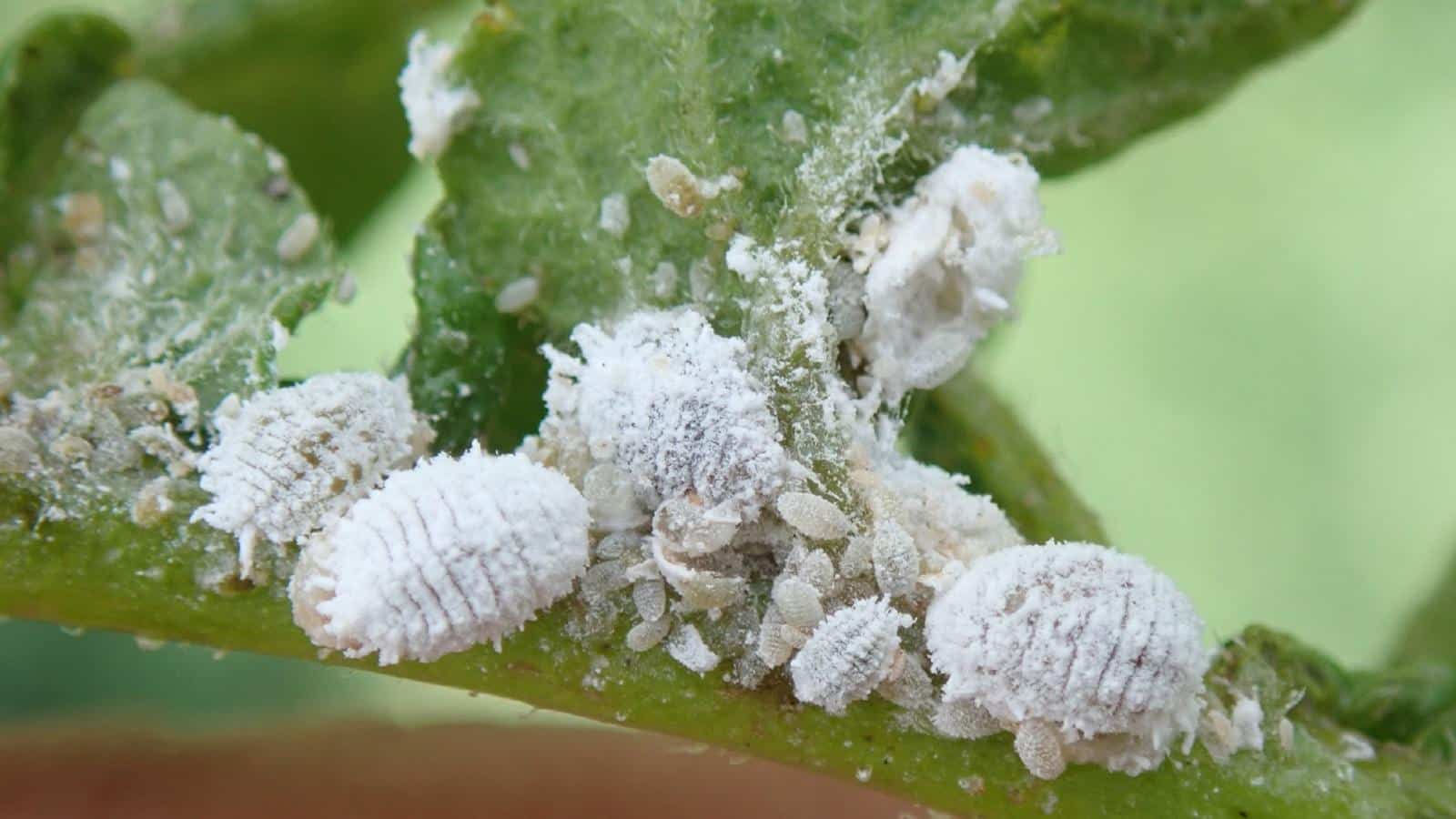
Mealybugs are tiny, soft insects that like to hang out in gardens. They bother gardeners because they suck on plant sap using their pointy mouths, which can hurt plants. These bugs also make sticky stuff called honeydew, which can bring ants and mold that harm plants even more. They love eating mealybugs. So, when you spot ladybugs on plants with mealybugs, know that they’re there to help and keep those plant-damaging bugs under control.
10. Lettuce
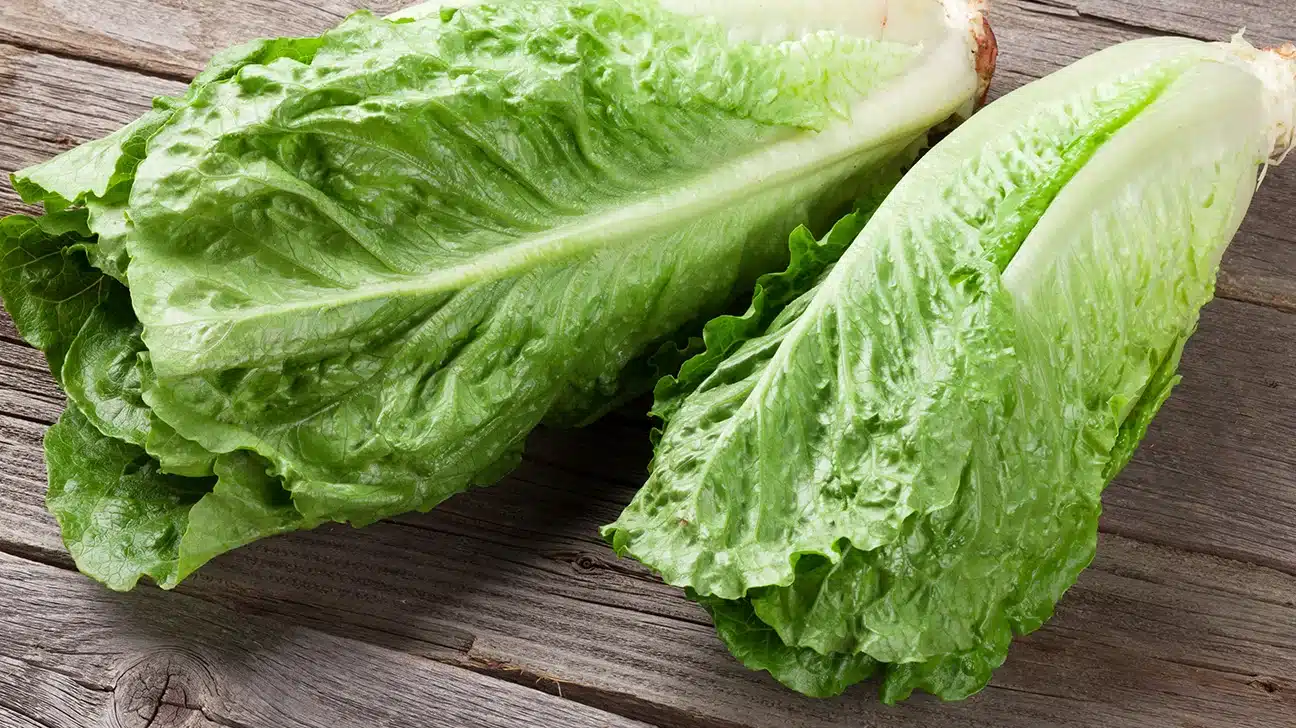
Lettuce is a green leafy veggie often grown in gardens. Ladybugs, those little beetles, can sometimes be seen munching on it. Even though ladybugs mainly eat insects, they might take a small bite of soft plant leaves, like lettuce, once in a while. But don’t worry, they won’t harm your lettuce much. Ladybugs are helpful friends to gardeners because they mainly eat insects like aphids and mealybugs, helping keep your garden free from pests.
11. Insect Bugs
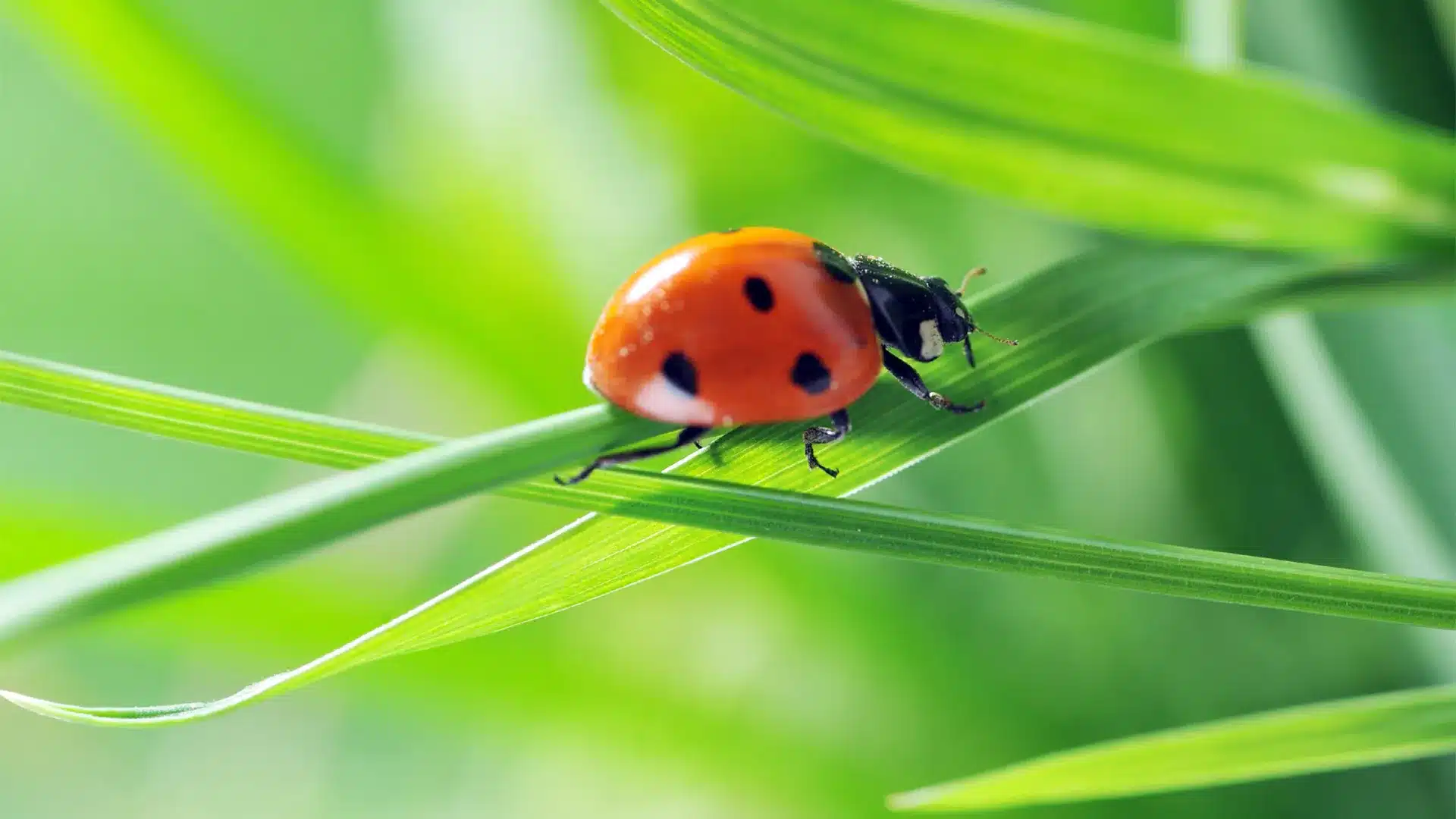
Ladybugs are bug-eating insects, and they mostly eat other tiny bugs. They love eating soft bugs that can harm your garden, such as aphids, scale insects, and mites. These harmful bugs can damage plants and spread diseases. Ladybugs are the garden’s protectors because they eat these bad bugs and help keep their numbers down. So, they’re an important part of your garden’s team.
12. Fruit Flies
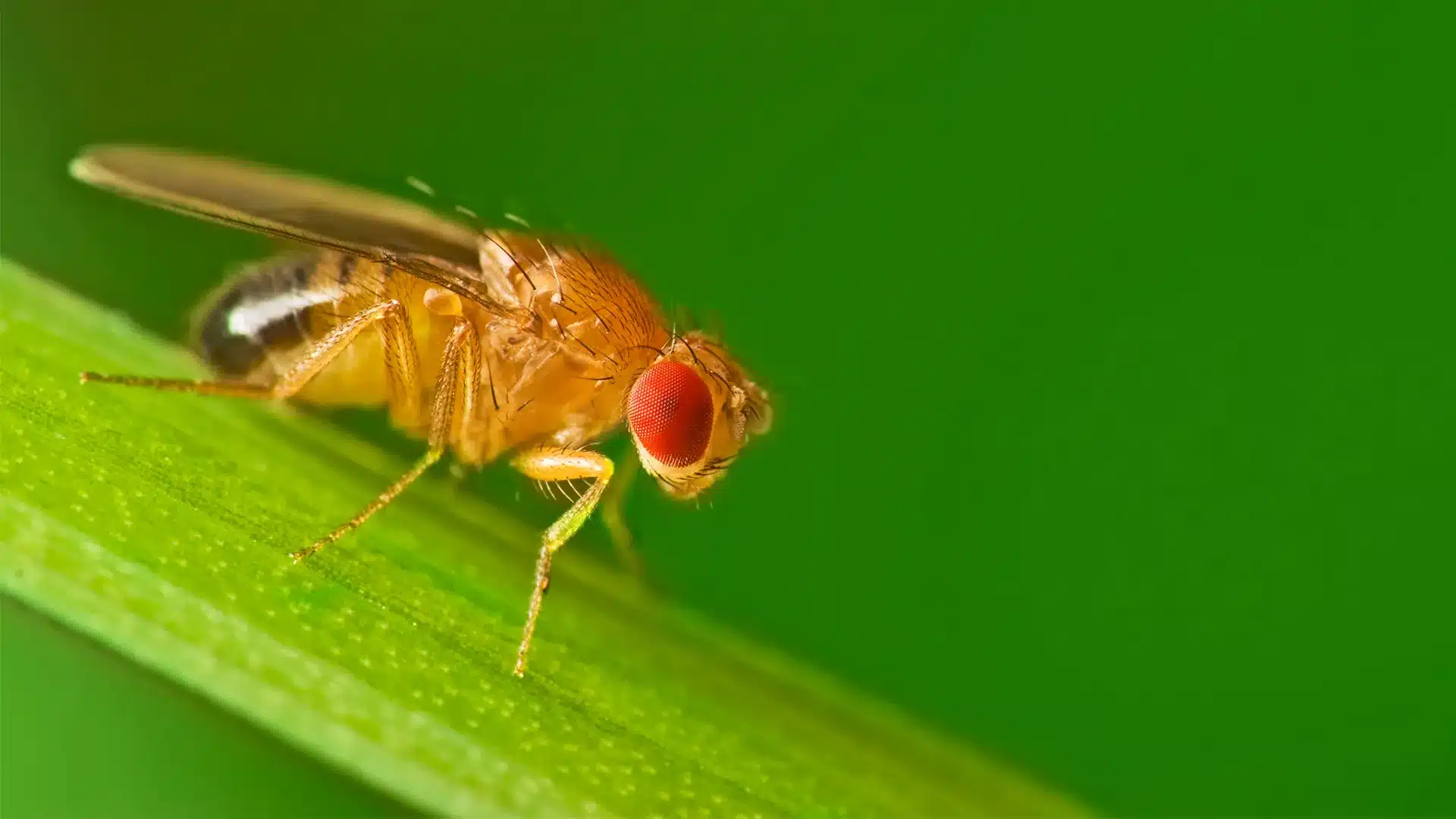
Fruit flies can bother gardens, especially when they are in large numbers to overly ripe or decaying fruits. Ladybugs, on the other hand, usually don’t dine on fruit flies. They mainly target bugs that harm plants. Even though ladybugs don’t directly tackle fruit flies, they still do your garden a favor by cutting down the number of other pesky insects that can harm your fruit-bearing plants. If you’re interested in collecting these ladybugs, you might want to consider getting a net.
13. Moth Eggs
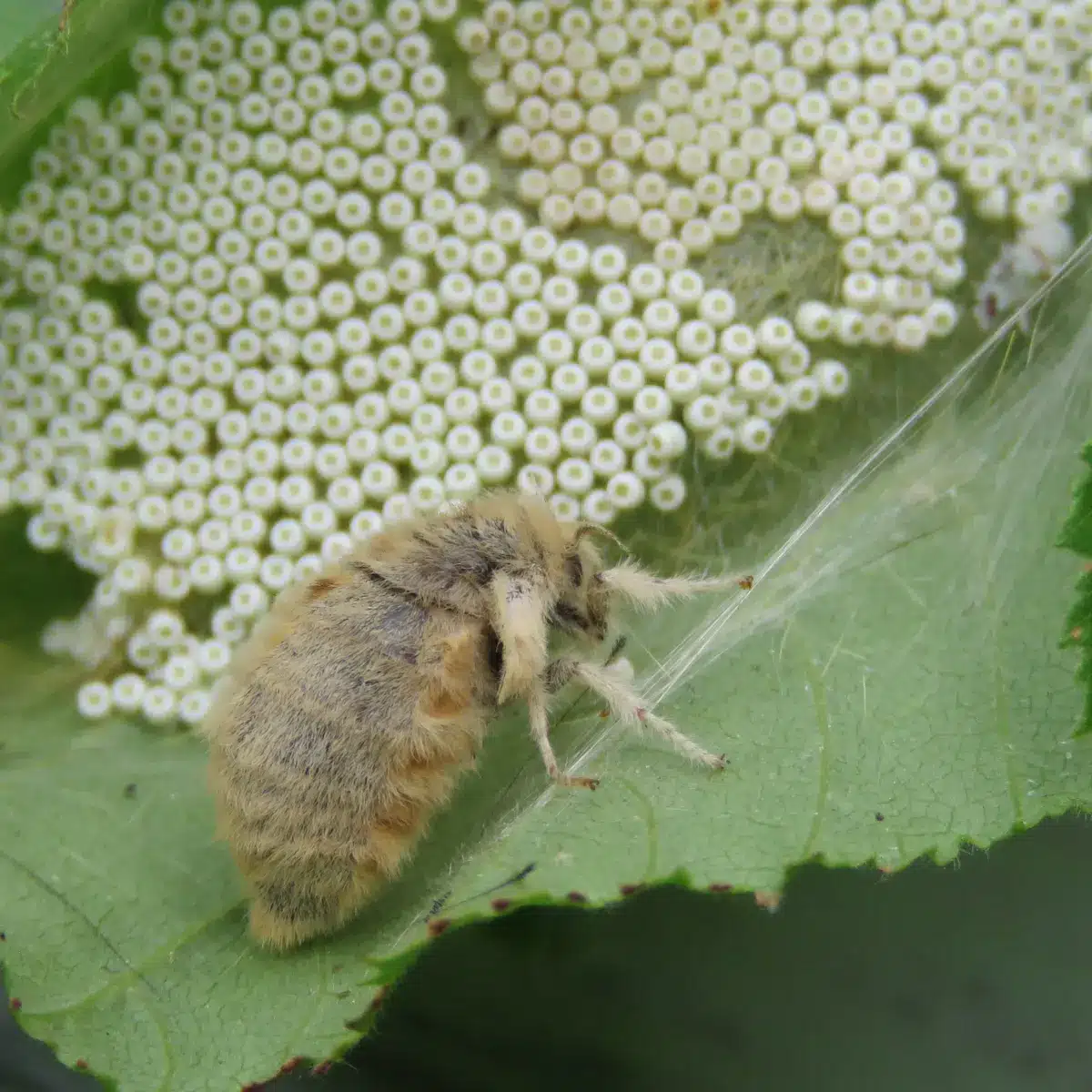
Ladybugs are one of them. Ladybugs are helpers in your garden because they love to gobble up moth eggs, which are tiny and laid on leaves and stems by moths. It’s a yummy snack for ladybugs and helps keep them strong and healthy. But here’s the cool part: when ladybugs eat these moth eggs, they also do a big favor for your garden. Munching on those eggs prevents moth larvae from hatching and munching on your plants, so your garden stays happy and safe.
14. Caterpillars
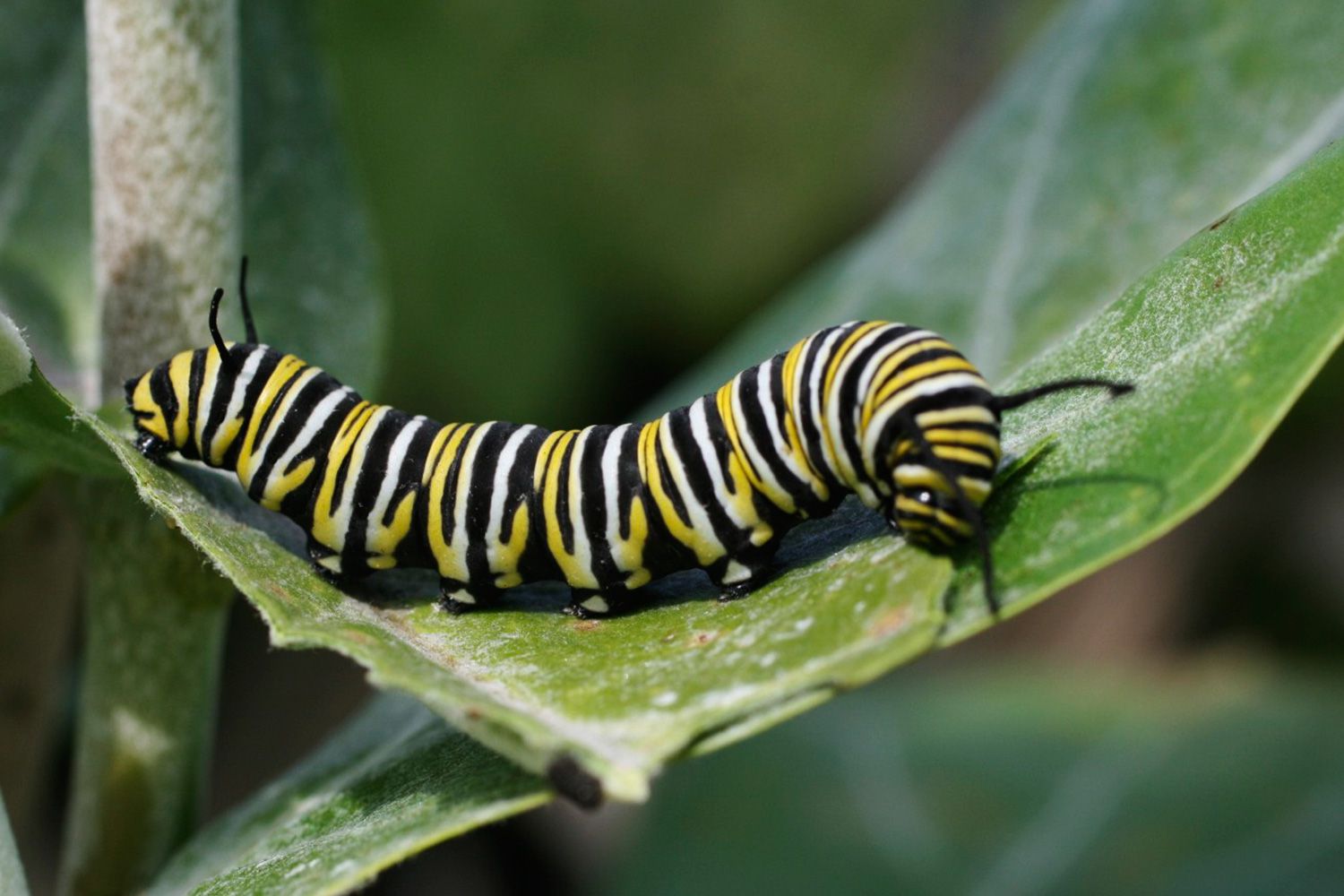
Caterpillars are baby butterflies and moths. They love eating plants. Ladybugs, on the other hand, are famous for eating insects that are easy to munch on, like caterpillars. So, when ladybugs find caterpillars in your garden, they eat them up super fast. This natural munching helps keep your plants safe from the harm caterpillars can do.
15. Honeydew Excretions
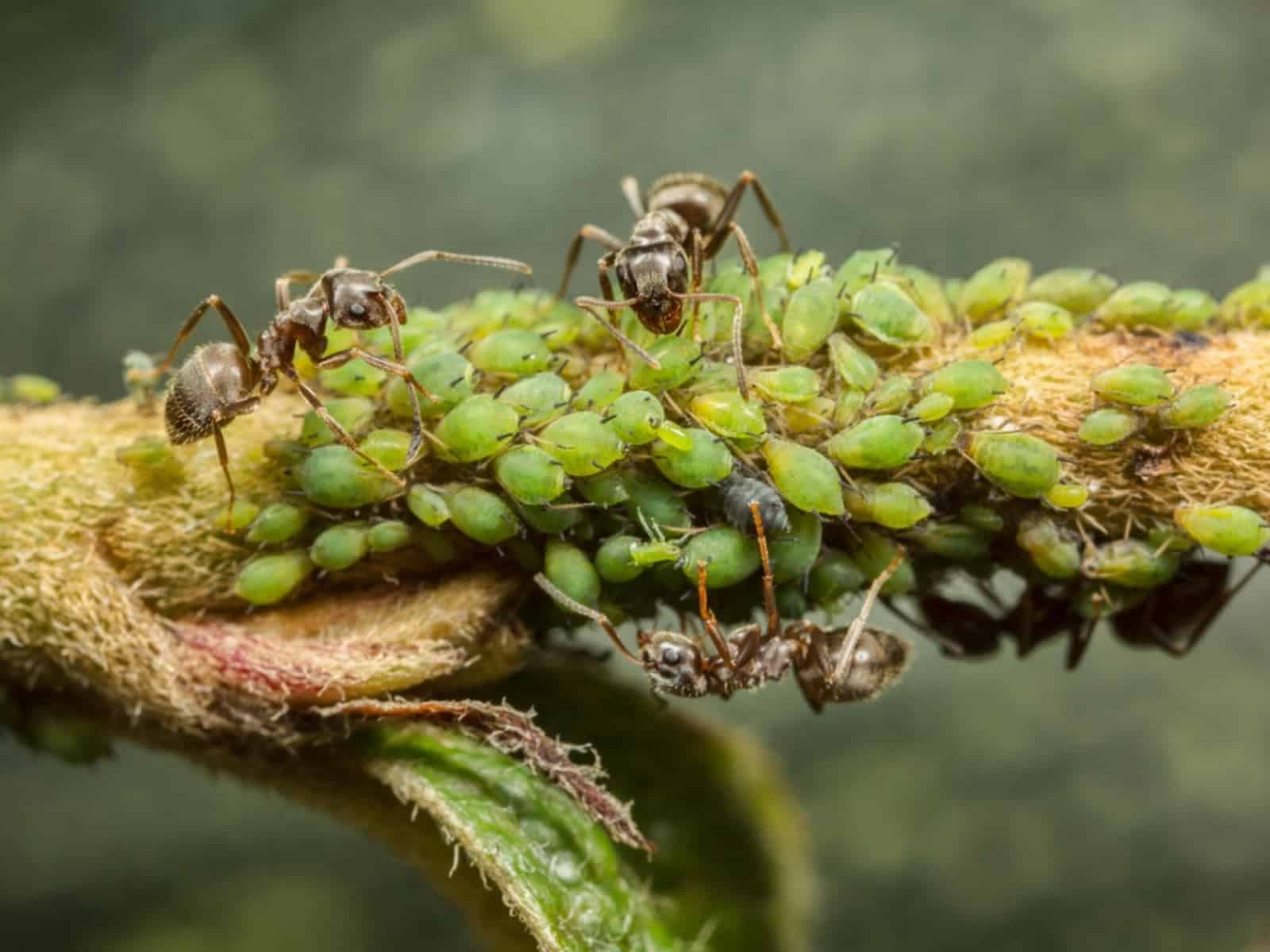
Honeydew excretions are sweet juices made by certain bugs that eat plant sap, such as aphids and mealybugs. Even though ladybugs mainly eat those bugs, they also love honeydew. Ladybugs might have a bit of honeydew when they’re eating the bugs that make it. But ladybugs don’t depend on honeydew as their main food, they mainly eat other bugs to stay healthy.
16. Beetle Eggs
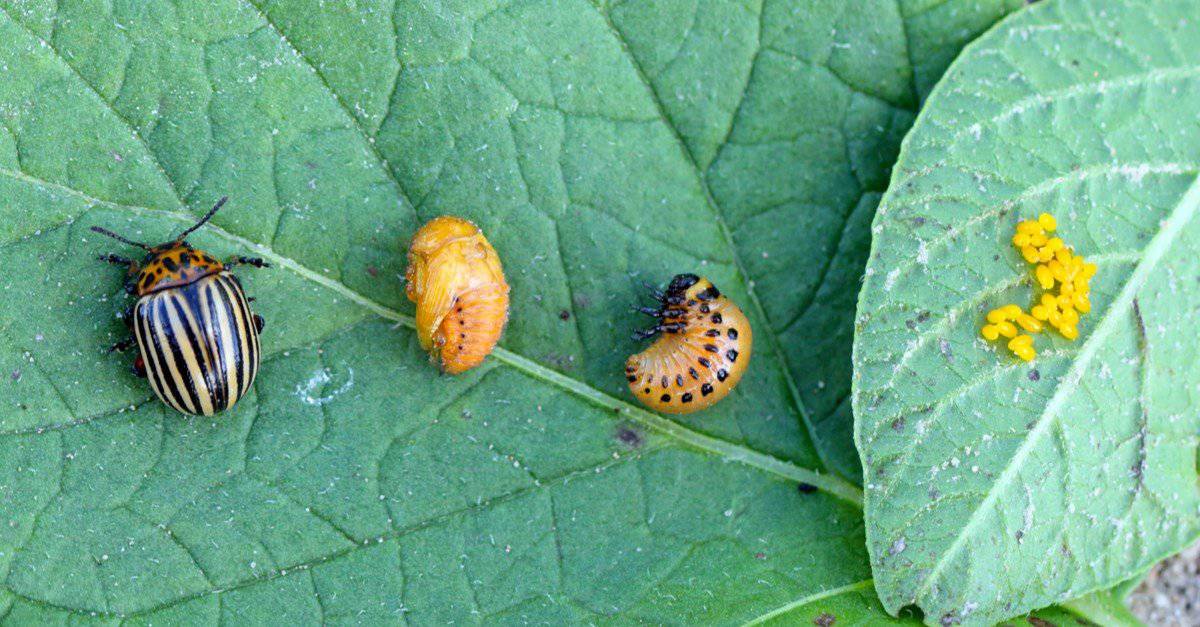
Well, Ladybugs don’t usually eat beetle eggs as their main food. They prefer to munch on insects with soft bodies because they have special mouthparts for slurping up their juices. Ladybugs are the little pest controllers in your garden, and their main job is to keep soft-bodied troublemakers such as aphids, mealybugs, and caterpillars in check, not so much the beetle eggs.
17. Spider Mites
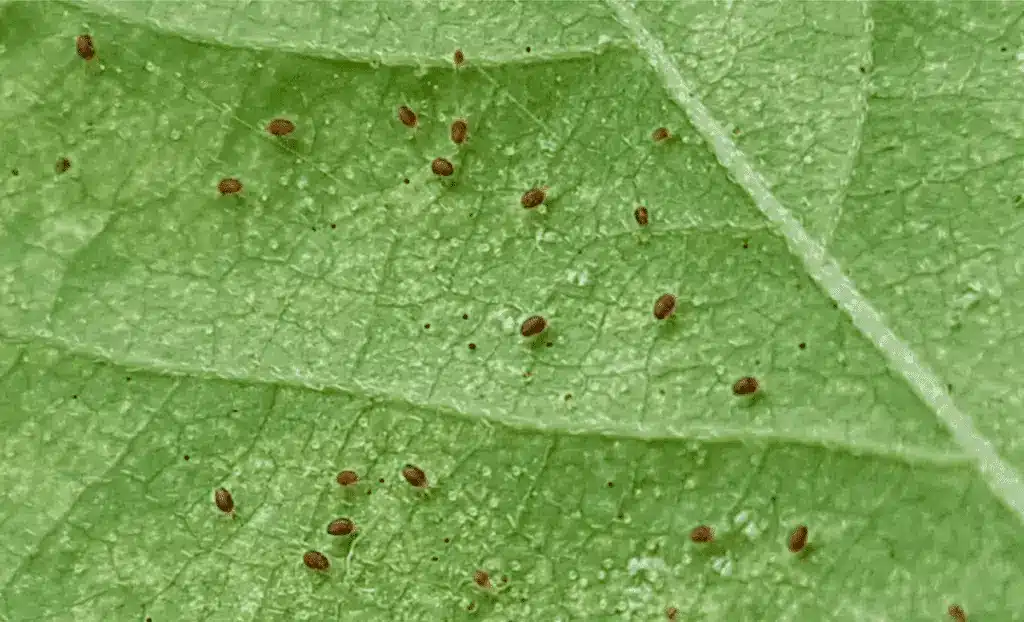
Spider mites are tiny pests that can cause serious damage to your garden plants. Luckily, ladybugs are natural enemies of these spider mites. Spider mites harm plants by sucking their juice through tiny holes in the leaves. Ladybugs, on the other hand, eat spider mites by catching them and gobbling them up. A single ladybug can eat as many as 50 spider mites in a day, which is incredibly helpful for keeping your plants safe.
18. Fungi
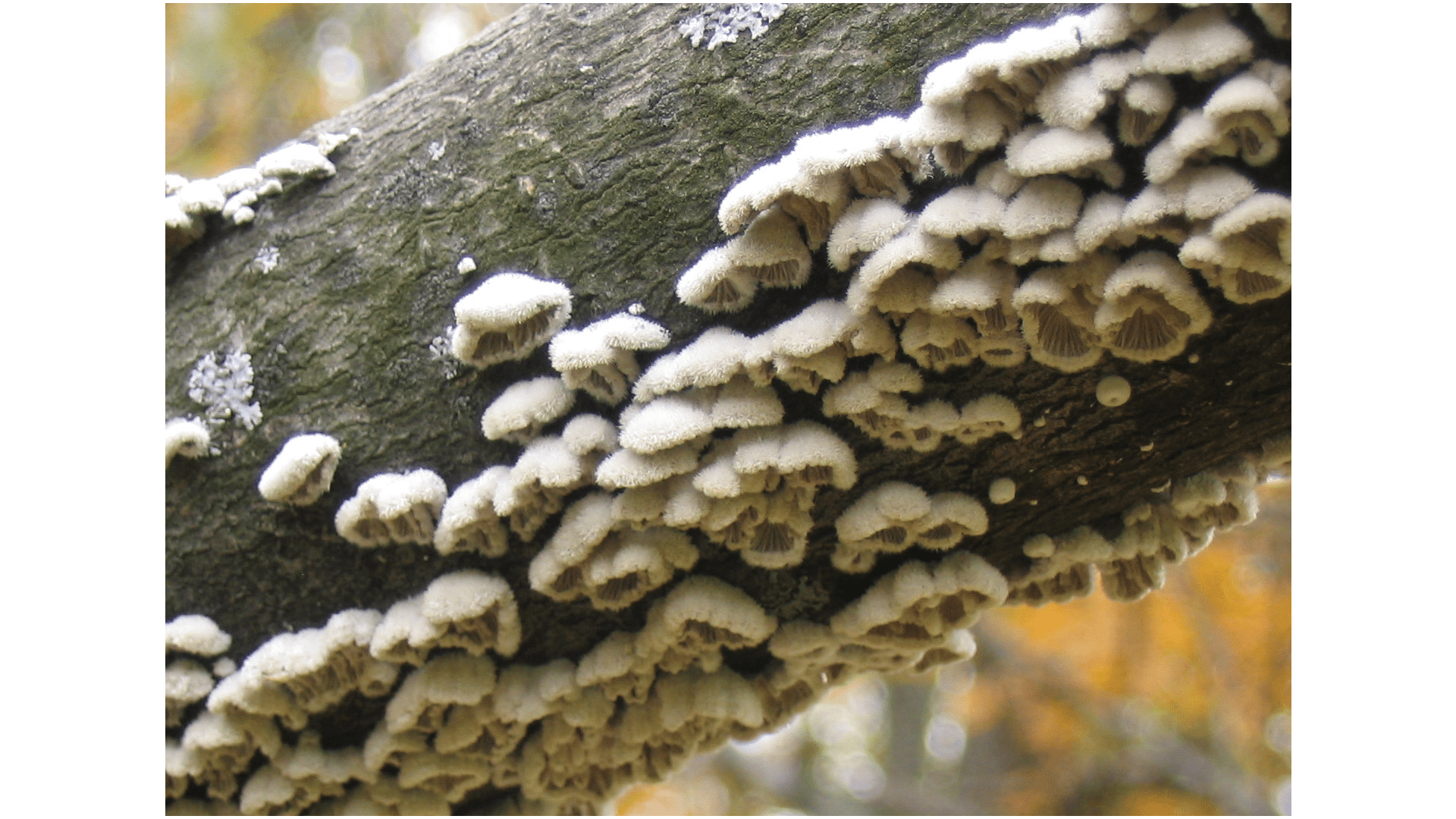
Fungi can have good and bad effects on your garden. Ladybugs don’t eat fungi but they help to control them. Ladybugs love to eat tiny insects called aphids. These aphids can make fungi spread when they suck plant sap. Ladybugs eat these aphids, which stops fungi from spreading. So, ladybugs indirectly make your garden healthier by reducing the number of aphids that carry fungi. Have a garden kit that includes habitat and live ladybugs for children to observe the amazing process.
19. Ants
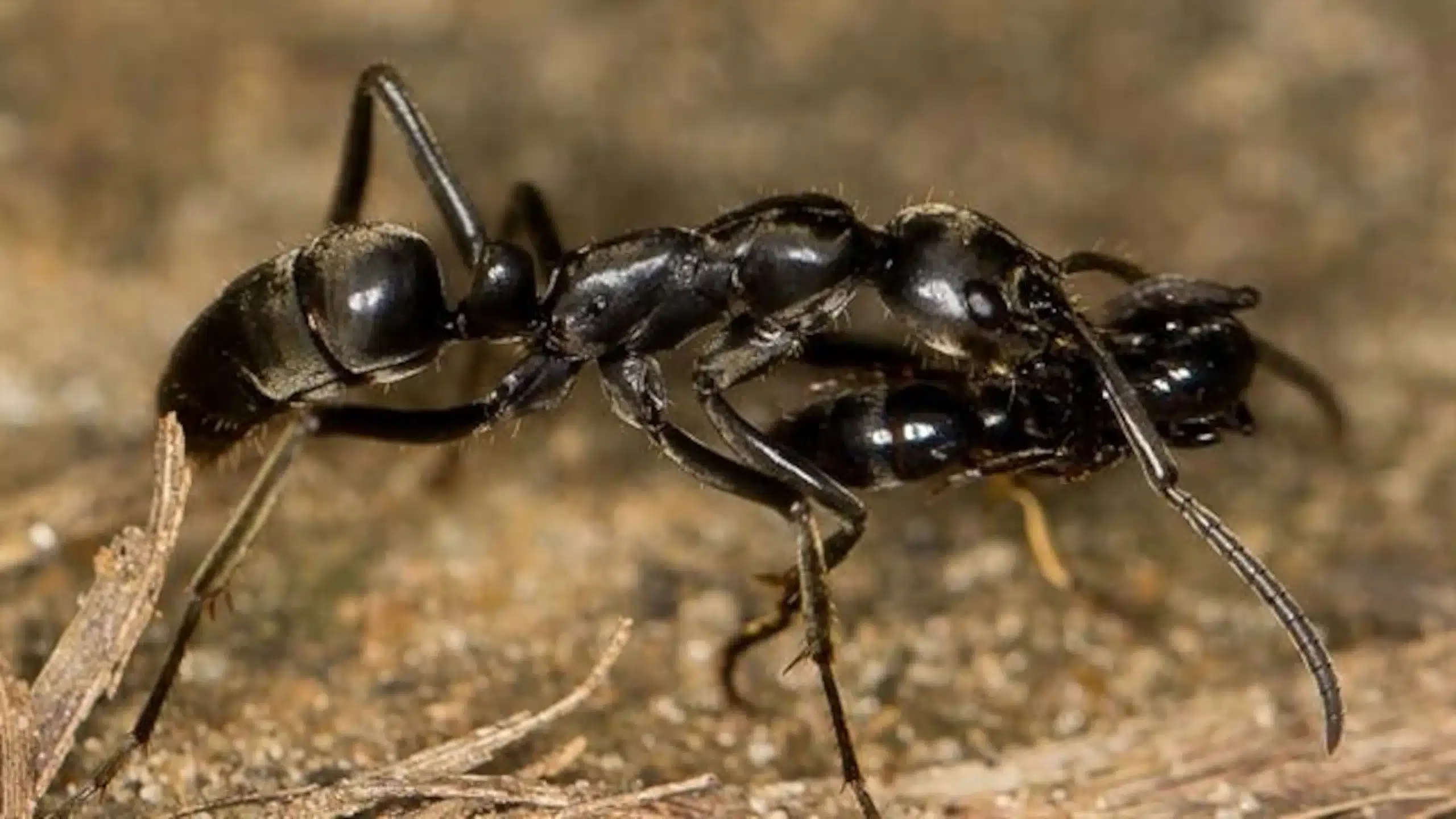
Ants are sweet stuff in your garden, and they can bother your plants and ladybugs. But ladybugs don’t care much about ants, they prefer eating soft insects such as aphids and whiteflies. Ants protect aphids because they get a sugary liquid from them. Ladybugs help control ants by eating aphids, so there’s less food to tempt ants in your garden. Use a magnifying glass for a closer look at the details of ladybugs and their features.
20. Whiteflies
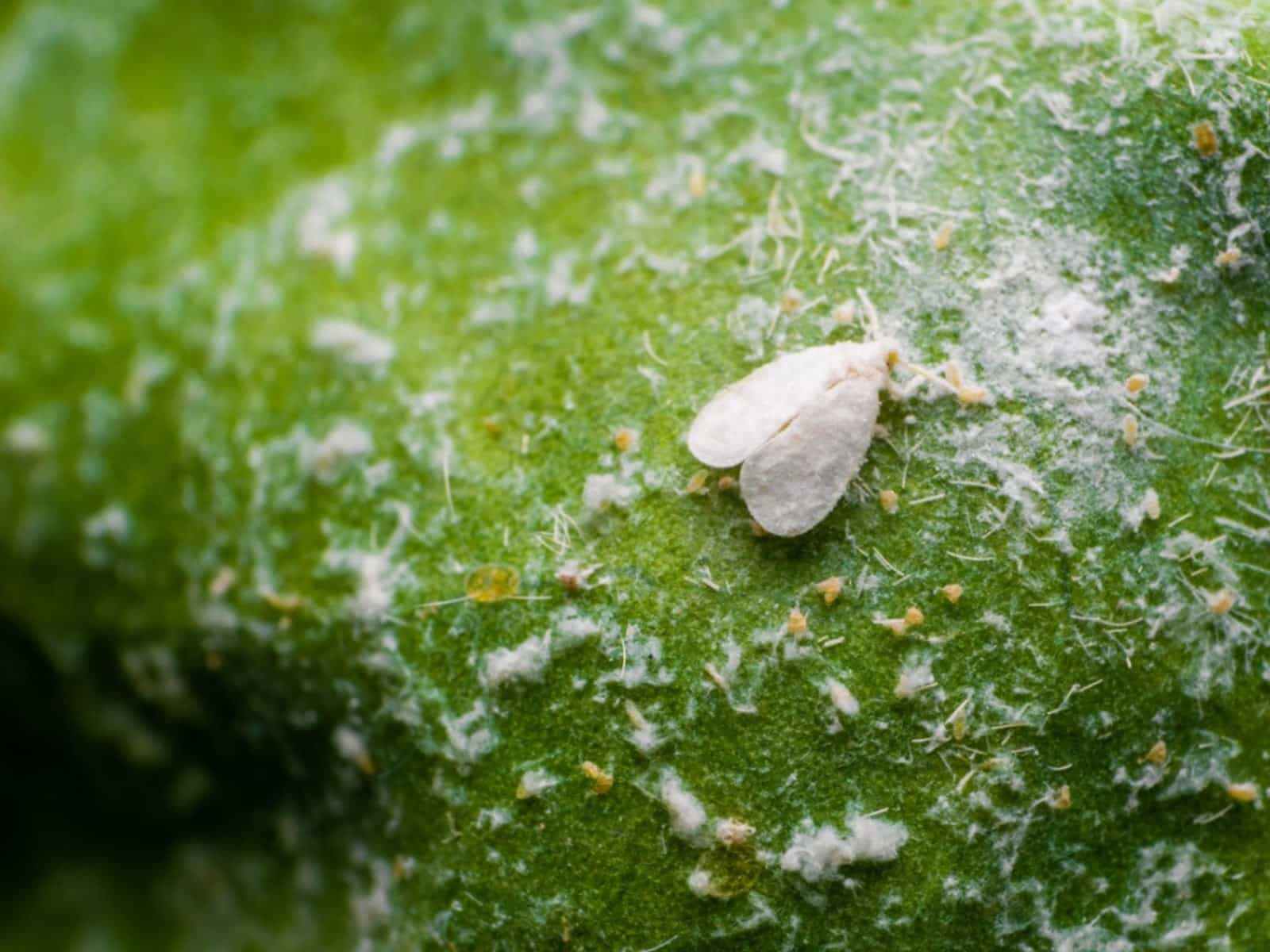
Ladybugs like to eat whiteflies, which are small bugs that bother gardens. Whiteflies suck plant juice by poking holes in leaves and then make sticky stuff called honeydew. Ladybugs are attracted to this sweet honeydew, and while they enjoy it, they also snack on whiteflies. One ladybug can eat lots of whiteflies in a day, so they’re great at helping you control these pests in your garden.
Conclusion
Now you know What ladybugs eat and drink in gardens. Ladybugs play an important role in our gardens by eating harmful insects such as aphids, ants, and caterpillars, helping to keep our plants healthy.
Unlike us, they don’t drink water from cups. Instead, they get their hydration from the insects they munch on and morning dewdrops on leaves. Having ladybugs in your garden is the same as having a natural pest control team.
They keep your plants healthy without using harmful chemicals. So, if you want a beautiful and growing garden, welcome ladybugs by planting flowers they like, such as daisies and marigolds.
Avoid using harmful pesticides that can harm ladybugs and their food sources. So, ladybugs eat the pests, and all they request in return is a comfortable home with some delectable pests to snack on.
Keep your garden ladybug-friendly, and you’ll have an attractive garden that you can enjoy!

